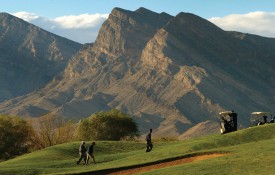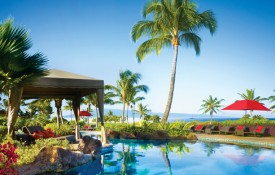By the time golfers get to the 16th fairway during their rounds on the famous Players Stadium Course at TPC Sawgrass in northern Florida, they will have been challenged physically and psychologically. If they’ve been lucky enough (or skilled enough) to hit quality shots across those first 15 holes, and smart enough to hire a caddie—and smarter still to heed that caddie’s advice—they could be on their way to posting a good score on an extremely difficult layout. But The Players Stadium Course’s final three holes are among the most challenging in all of golf, and a stride down the 16th fairway provides golfers with their first glimpse of TPC Sawgrass’ iconic 17th: a short par 3 played to an island green that is perhaps golf’s most recognizable hole thanks to almost four decades of televised coverage of The Players Championship each spring.

(Photo credit: PGA Tour)
While players will be reminded periodically of that tournament over the Stadium Course’s first 15 holes, their perspective of the course’s concluding trio will be influenced more by the memorable shots they’ve watched hit on those holes over the years than by the topography and design features that characterize the holes themselves.
“What I love about the Stadium Course is that it feels like I’m challenging history throughout a round,” says Tom Alter, vice president of communications for the PGA Tour. “If I remember certain players having a similar shot during The Players Championship in the past, I can compare how I did against some of the greatest players in the world.”
Alter’s perspective is shared by many who regularly walk (and sometimes play) the course, including aspiring tour pro Montrele Wells, who routinely works as a caddie at the resort and goes by Monty when he’s shouldering a visiting player’s bag. “Going out there every day knowing the history behind it and the stories that have unfolded and still will unfold, it never gets old,” Wells says of his time spent on TPC Sawgrass’ flagship course. “My goal is to play on the PGA Tour, but this is the next best thing. I’m still winning by doing this on a day-to-day basis.”

(Photo credit: PGA Tour)
Although visitors willingly spend the requisite $500 to play The Players Stadium Course at TPC Sawgrass, they may mistakenly overlook the club’s second layout, Dye’s Valley, a 6,847-yard course that costs half as much to play and delivers an altogether different though no less memorable round of golf. Conceived by Pete Dye (and Bobby Weed) and built five years after Dye’s Stadium Course hosted its first Players Championship in 1982, “The Valley” is a true resort course, which means golf carts are allowed to roam the playing surfaces, multimillion-dollar homes line several of its fairways, and the course—while still a quintessential Dye design—is generally more manageable for the average amateur (so long as they can avoid the water hazards that come into play on two-thirds of its holes).

(Photo credit: PGA Tour)
“What I love about The Valley is that it challenges me to play my best,” says Alter. “If I hit good shots, I know I’ll be rewarded, and I’ll have a good round. Oftentimes an OK shot on The Players Stadium Course is not good enough; but you can get away with some OK shots on Dye’s Valley.”
A round on The Valley can also more effectively remind visitors of the monumental efforts that were required to transform 415 acres of flat Floridian swamp and wetlands into the undulating, visually captivating golf destination that TPC Sawgrass has become. After all, when Dye first surveyed the property during the late 1970s, he noted that there was no more than 18 inches of natural elevation above the waterline. Today, the gentle slopes that Dye built up around numerous holes on The Players Stadium Course—some of which rise 30 feet high—feel almost like an extension of the grandstands, which remain fully constructed for much of the year. Similar slopes and hillsides also define the perimeter of holes on Dye’s Valley; however, with no corresponding grandstands those slopes become more of a focal point.
Can an introductory round of golf on Dye’s Valley prepare visitors for their subsequent rounds on The Players Stadium Course? The discrepancies between the two courses’ levels of difficulty suggests not. That being said, a round of golf on Dye’s Valley still offers insights that can enhance a player’s round on The Players Stadium Course. Simply put, playing The Valley fosters an appreciation for Dye’s transformative achievements, providing a fresh perspective that allows visitors to see beyond the grandstands and the heroic shots that the world’s best players have hit on TPC Sawgrass’ more famous course.












































